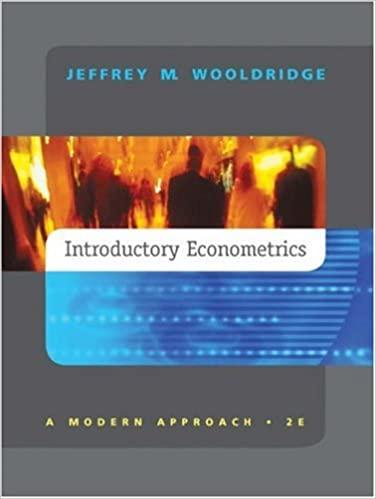Question
Q51. When money is accepted as payment for a good orservice, it is being used as a A. mechanism for transforming current purchases into future
Q51. When money is accepted as payment for a good orservice, it is being used as a
A.
mechanism for transforming current purchases into future purchases.
B.
medium of exchange.
C.
unit of account.
D.
store of value.
Q52. Suppose a bank has$200,000 indeposits, a required reserve ratio of 10percent, and reserves of$45,000. This bank has excess reserves of
A.
$155,000.
B.
$25,000.
C.
$10,000.
D.
$5,000.
Q53. The fraction of deposits that banks are required by law to hold and not lend out are called its
A.
net worth.
B.
reserves.
C.
required reserves.
D.
excess reserves.
Q54. An open market sale of bonds by the Federal Reserve will lead to an increase of reserves in banks.
True
False
Q55. Which of the following is a bankliability?
A.
demand deposit balances
B.
required reserves
C.
reserve deposits held at the Fed
D.
loans made to customers
Q56. The rate at which the money supply turns over in economic transactions in a given year to purchase nominal GDP is known as
A.
money demand.
B.
the discount rate.
C.
the velocity of money.
D.
the money multiplier.
Q57. What would be a way for the Federal Reserve to stimulate an economy that issluggish?
A.
print more money
B.
sell more government bonds
C.
buy back government bonds on the open market
D.
encourage the stock market
Q58. Suppose the public expects a 7 percent inflationrate, while the Federal Reserve allows the money growth rate to be 7 percent. In the shortrun, we expect that
A.
real interest rates will increase.
B.
real interest rates will decrease.
C.
real interest rates will remain constant.
D.
real interest rates may increase or decrease.
Q59. Suppose that the government has a$100 million deficit. How can the government finance thedeficit?
A.
through new borrowing from the public and new money created.
B.
through new borrowing from the public only.
C.
through the printing of new money only.
D.
through the sale of government buildings and historical artifacts only.
Q60. When GDP is below potentialoutput, prices fall because
A.
firms find it difficult to hire and retain workers and can offer higherwages, which decreases the costs of production.
B.
firms can easily find new workers and can offer lowerwages, which decreases the costs of production.
C.
firms can easily find new workers and are forced to offer higherwages, which decreases the costs of production.
D.
firms find it difficult to hire and retain workers and are forced to offer higherwages, which increases the costs of production.
Q61. The federal funds rate is the interest rate that
A.
the Fed pays on bank reserves.
B.
the Fed charges to banks that borrow from it.
C.
banks charge each other for borrowed money.
D.
banks charge the Fed for using their reserves.
Q62. Countries with more independent central banks tend to have
A.
higher rates of GDP growth.
B.
lower rates of unemployment.
C.
higher inflation rates.
D.
lower inflation rates.
Q63. The group responsible for making decisions regarding monetary policy is the
A.
group of 12 Federal Reserve Bank presidents only.
B.
Board of Governors only.
C.
Federal Advisory Council.
D.
Federal Open Market Committee.
Step by Step Solution
There are 3 Steps involved in it
Step: 1

Get Instant Access to Expert-Tailored Solutions
See step-by-step solutions with expert insights and AI powered tools for academic success
Step: 2

Step: 3

Ace Your Homework with AI
Get the answers you need in no time with our AI-driven, step-by-step assistance
Get Started


